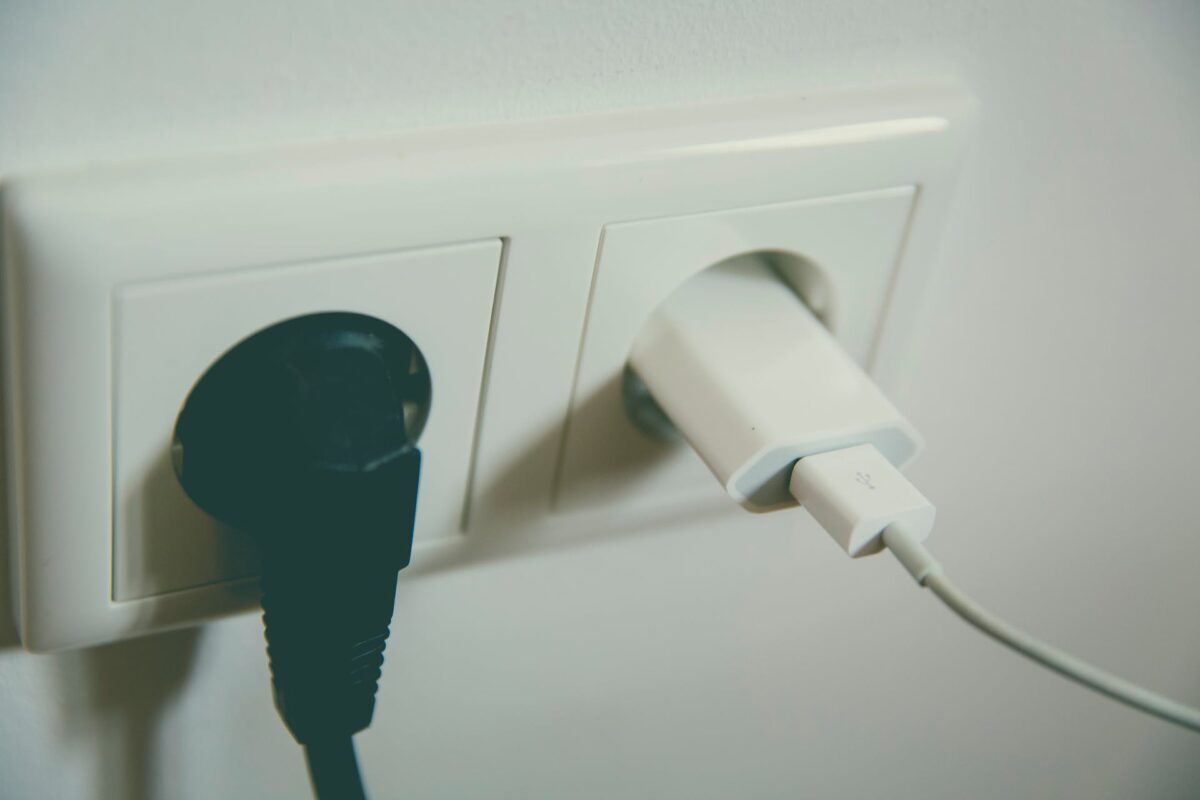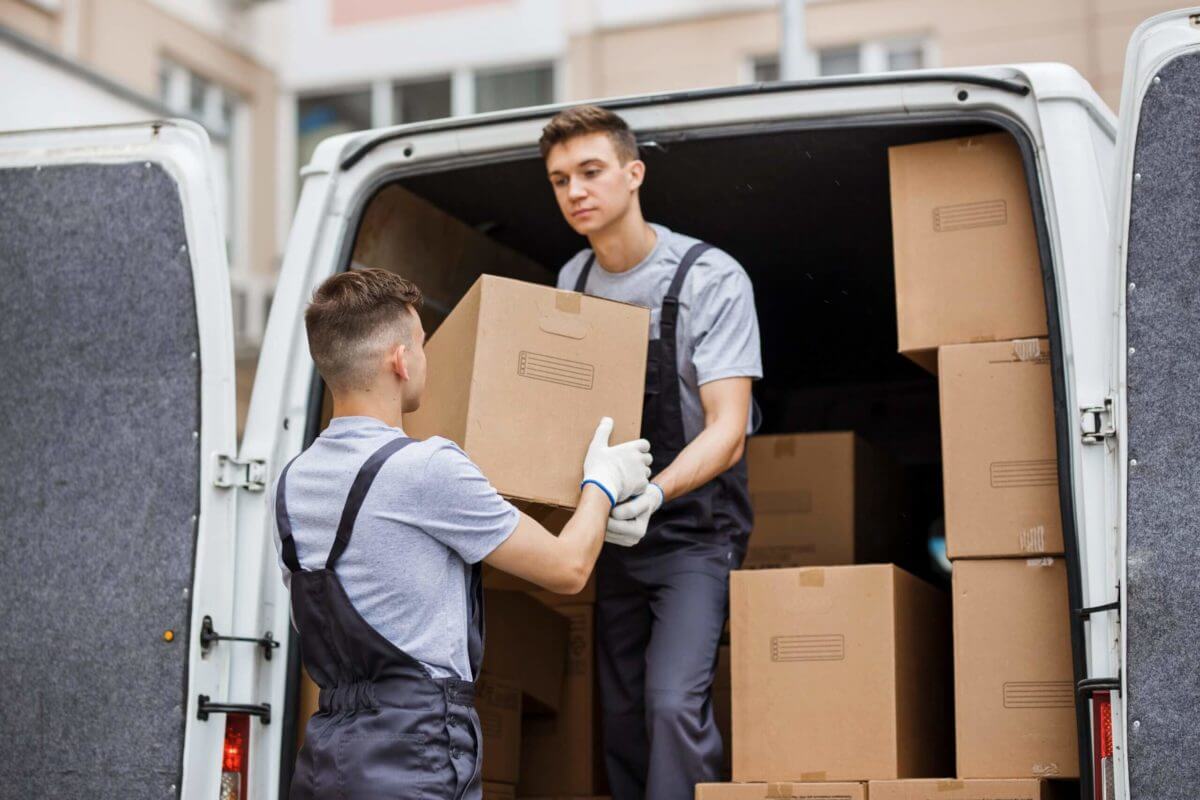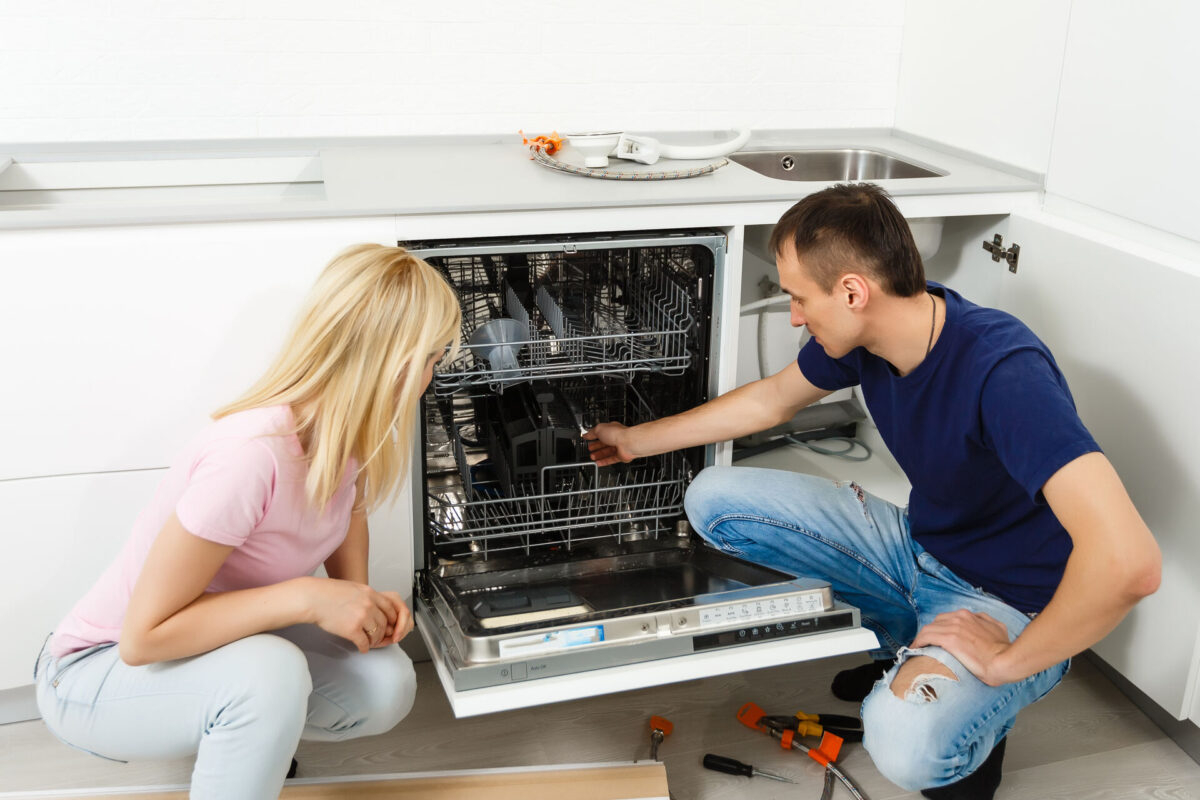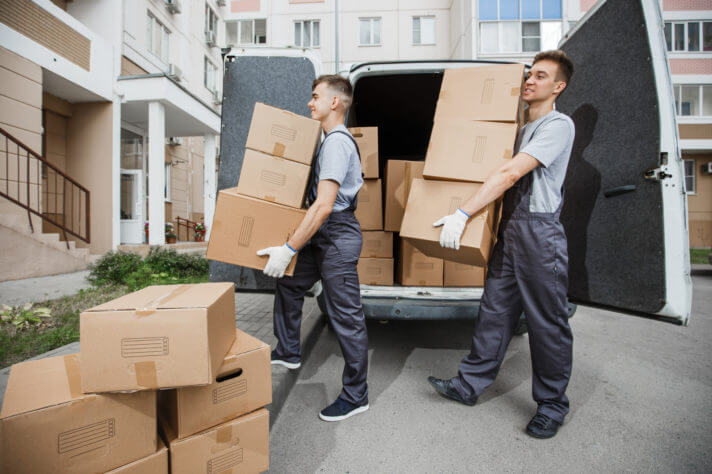So, what do you need to know about the process of moving appliances? It’s not just about having a fridge on a truck and hoping for the best. First and foremost, always consult the user manual for specific moving instructions. Some appliances have delicate parts that require special handling. Before unplugging anything, make sure you’ve emptied and defrosted any refrigeration units. Use moving straps and a dolly for heavier items to protect both the appliance and your back. And remember, appliances have intricate connections, so it’s crucial to label cords or take photos to ensure a hassle-free setup at your new destination.
How to Move Appliances Safely – A Step-by-Step Guide
Ready to journey across the land with your trusty appliances in tow? If you’re scratching your head, pondering how to move appliances safely on such a grand voyage, you’re in the right place! Embarking on a cross-country relocation is no small feat, but with our comprehensive, step-by-step guide, everything from a refrigerator and washer to an oven will be road-ready like rock stars. Buckle up for a smooth relocation rollercoaster!


Why Moving Appliances Safely Matters
It might be tempting to cut corners when relocating hefty home appliances, but think twice. Improper handling of these items can lead to significant damages, both to the appliance and your wallet.
The average refrigerator costs between $430 and $10,600. Mishandling it could mean shelling out for a pricey replacement. The same goes for washing machines and dishwashers, which can cost anywhere from $445 to $2,300 and $330 to $1,900 respectively.
Beyond the potential harm to these machines, there’s also a risk of personal injury or damage to your property. On the flip side, taking the time and effort to relocate appliances with care can be a money-saving endeavor in the long run.
Pre-Move Preparation – What You’ll Need
It’s essential to gather a few crucial materials and tools to ensure you move efficiently. Packing tape will keep doors and lids secure. Bubble wrap and protective blankets shield against dings and scratches, which is essential, especially while rushing to prepare for the arrival of long-distance movers.
Sturdy boxes of varied sizes can hold detachable parts, ensuring they don’t get lost in transit. A notepad or labeling system is invaluable for keeping track of cords and components, helping in a smoother re-setup later.
Don’t Skip Measuring Appliances
When relocating large items, measurements aren’t just numbers – they’re a roadmap to a safe transition. Knowing the exact dimensions of each item is paramount. It ensures they fit through doorways, onto vehicles, and into their new spaces seamlessly.
Use a quality tape measure and always measure twice for accuracy. Understand height, width, and depth, and jot down these figures. Having these numbers at hand not only allows one to relocate safely but also prevents the time-consuming mishaps of forced fits or readjustments.
Picking the Right Equipment
The right tools can make a world of difference and help you avoid injury while relocating. Sliders, for instance, are thin pieces of plastic or rubber placed under heavy items, making them glide effortlessly over surfaces – perfect for hardwood floors or tiles.
Dollies, on the other hand, are two or four-wheeled platforms that support and transport weighty items. They come in various styles, from flatbeds to hand trucks, suited for different items and terrains. Investing in or renting quality equipment is a small step with a significant impact on the efficiency and safety of the relocation journey.


Preparing Appliances for the Relocation
When you’re gearing up for a transition, every item has its place on the moving-out list. But larger household items require special attention. Begin by deciding what to keep when relocating. Next, make a checklist for each item.
It might include steps like unplugging, cleaning, securing loose parts, or even seeking professional help for specific tasks. A detailed approach ensures each item is ready for its journey, minimizing risks and making setup in the new location much smoother.
Cleaning and Disinfecting
One of the often-overlooked steps in the relocation process is giving your household items a thorough scrub. Engaging in a move-out cleaning not only ensures you’re not bringing dirt or pests to the new home but also positions these items as new home essentials, fresh and ready for use.
Use eco-friendly cleaners and disinfectants, focusing on areas that frequently come into contact with food or moisture. Ensure they are thoroughly dried to prevent mold growth or unpleasant odors during transit.
For appliances that are made of stainless steel, watch this video and use some tricks for efficient cleaning.
Securing Loose Parts
If there’s one thing that needs to be avoided, especially when moving cross country, it’s the sound of rattling or loose components in transit. Efficient packing is crucial. Use zip-lock bags or small boxes to store screws, knobs, or any removable parts.
Label each bag or box clearly and tape or secure it to the item or place it in an accessible box. This ensures that when it’s time to reassemble or set up, everything needed is at hand.
Detaching From Power Source
Before considering whether to donate old appliances or pack them for relocation, it’s vital to ensure they’re safely detached from their power sources. For electric items, it’s often as simple as unplugging them. However, for gas-powered items, you might need to turn off the gas supply, detach the hose, and ensure any open gas lines are sealed.
Refrigerators and freezers should be unplugged in advance to allow them time to defrost. Always remember – safety first! If you’re unsure about any step, consulting a professional or the user manual is a wise choice.


The Moving Day – How to Move Appliances Safely
The big day has finally arrived, and it’s time to transport those hefty household items. One of the critical relocation day tips is to avoid a last-minute rush. Make sure you’ve gone over the relocation checklist, ensuring every item is prepped and ready for the journey. It’s not unusual to feel a mix of excitement and anxiety. Lean on the expertise of the movers from the long-distance moving company you hired. Their experience will be invaluable, ensuring a smoother transition.
Use Safe Lifting and Carrying Techniques
As you prepare to transition, the importance of correct lifting and carrying cannot be overstated. The way these items are handled can make a difference in avoiding potential injury. Consider the following techniques:
- Bend at the knees and not your waist,
- Hold the item close to your body,
- Lift with your legs,
- Avoid twisting your body,
- Keep a straight back.
Navigating Through Doors and Hallways
For those relocating for the first time, the realization that doorways and hallways can be challenging obstacles might be a surprise. First, measure the dimensions of passageways and compare them to the household items.
Remove any potential obstructions in the path. If an item has wheels, ensure they’re locked to prevent unintentional rolling. When turning corners, take it slow and have someone guide you if the item obscures your vision.
What About Loading Into the Moving Truck?
If there’s one task best left to the professionals, it’s the act of loading into the moving truck. The expertise required here, especially when managing space and ensuring safe transit, is something reputable long-distance moving services excel in. If you’ve made the wise decision to invest in such services, trust their methods and guidance. They have the tools and know-how to position each item optimally, ensuring a secure journey to its new destination.


Post-Relocation – Setting Up Appliances in the New Home
After the dust settles, it’s time to unpack after the relocation. Setting up household appliances might seem difficult, but with a systematic approach, it can be an organized and even enjoyable process.
Remember to consult any notes or labels made during the disassembly phase, and always refer to user manuals if in doubt. Ensure you have the right tools at hand, and gradually bring life to the new living space.
Important Step – Check for Damages
Among the various tasks post-relocation, one of the most crucial steps is checking items for potential damages. Before using them, inspect each item thoroughly. Look for dents, scratches, or any signs of internal damage, like strange noises when powered on.
Proper inspection at this stage can save anyone from potential hazards later on. If you notice any irregularities, it could be a result of packing mishaps. Instances like these underscore the wisdom of investing in professional packing services. Packer’s expertise can minimize the risk of damages due to inadequate packing.


Choose A Reputable Cross Country Moving Company to Help You
Taking on a cross-country relocation is no small feat, and doing it alone can be both overwhelming and risky. To make the process smoother and more efficient, it’s wise to hire a reputable company specializing in cross-country moving services.
Not only does this ease the burden of logistics and manual labor, but it also offers peace of mind, knowing all possessions are in expert hands. A telltale sign of a reliable relocation company is its USDOT number, which is a unique license number issued to relocation companies.
Before making the final decision, it’s a smart move to check the reputation of the cross-country moving companies you are considering on the Better Business Bureau website.
Moving
Our mission is to bring high quality, long distance moving services to every customer.
Packing
Our expert moving teams are trained to ensure the safety of your personal belongings.

Auto Transport
Cross Country Moving Company is the most trusted name in auto industry in the country.
Time to Make Your Move – Trust Us With Precious Appliances
Relocating can be a hefty challenge, but remember the key steps – preparation, secure packing, and safe transit. Why tackle it all alone when experts can take care of everything? At Cross Country Moving Company, we’ve mastered the art of relocating, and our track record speaks for itself. With our commitment to excellence, rest easy knowing all belongings are in safe, professional hands. So, if you’re ready to relocate without hassle, give us a shout. With us, a relocation isn’t just another task; it’s a seamless experience. Contact us, Cross Country Moving Company – where everything is secure and relocating is a breeze!
FAQ
Can I Move My Appliances Without Professional Help?
While it’s possible to do this without professional assistance, it can be challenging and risky. Professional movers have specialized equipment and expertise to ensure a safe relocation. If a DIY approach is considered, thorough research and proper tools are essential.
How Do I Disconnect My Washing Machine for Moving?
First, turn off the water supply valves located behind the washing machine. Next, disconnect the hoses using pliers, ensuring you keep track of any washers. Finally, drain any residual water from the hoses and secure the power cord and drain hose.
Is It Safe to Lay a Refrigerator Down When Relocating?
While it’s preferable to move a refrigerator upright, laying it down is possible if done correctly. Ensure it’s laid on its side, not its back. After relocating, it’s essential to let the refrigerator stand upright for several hours before plugging it in.
What’s the Safest Way to Move a Gas Stove?
First, ensure the gas supply is turned off. Use a wrench to disconnect the gas line. If you’re unsure about the process, consulting a professional is advised. Protective gloves and safety precautions are a must.
What Do I Need to Know About How to Move Heavy Appliances?
Always prioritize safety by using proper lifting techniques. Investing in specialized relocation equipment, like dollies or sliders, can make the process smoother. If in doubt, consider seeking assistance or hiring professionals to prevent injuries.
Do I Need to Defrost My Freezer Before Relocating?
Yes, it’s essential to defrost the freezer at least 24 hours before relocating. This prevents water damage and potential electrical hazards. Ensure it’s cleaned and dried properly after defrosting.
How Do I Secure the Doors on My Appliances?
Use strong moving tape or bungee cords to keep appliance doors securely shut during transit. For possessions like fridges, ensure they are empty to prevent items from shifting. Always tape doors at the top, middle, and bottom for maximum security.
What Type of Moving Equipment Is Best for Heavy Appliances?
Dollies are ideal for transporting heavy items, offering stability and ease of movement. Sliders can be used to protect floors while moving items across a room. Ensure the equipment can bear the weight of the appliance in question.
How Can I Protect My Floors When Relocating Appliances?
Use sliders or moving blankets under appliances to slide them without scratching floors. For carpeted areas, a plywood path can help distribute weight. It’s essential to lift, not drag, belongings whenever possible.
Can I Transport Small Appliances in Their Original Boxes?
Yes, the original boxes are designed to protect possessions during transit. If you have them, it’s ideal to use them, ensuring all original packaging material is included. If the original box isn’t available, use sturdy boxes with ample cushioning.
Should I Tip My Movers if They Handle My Appliances Safely?
Tipping is a personal choice, but if the movers provide exceptional service and handle all items with care, a tip is a generous way to show appreciation. It’s customary to tip based on the overall relocation experience. Remember, tips are always appreciated but not obligatory.









